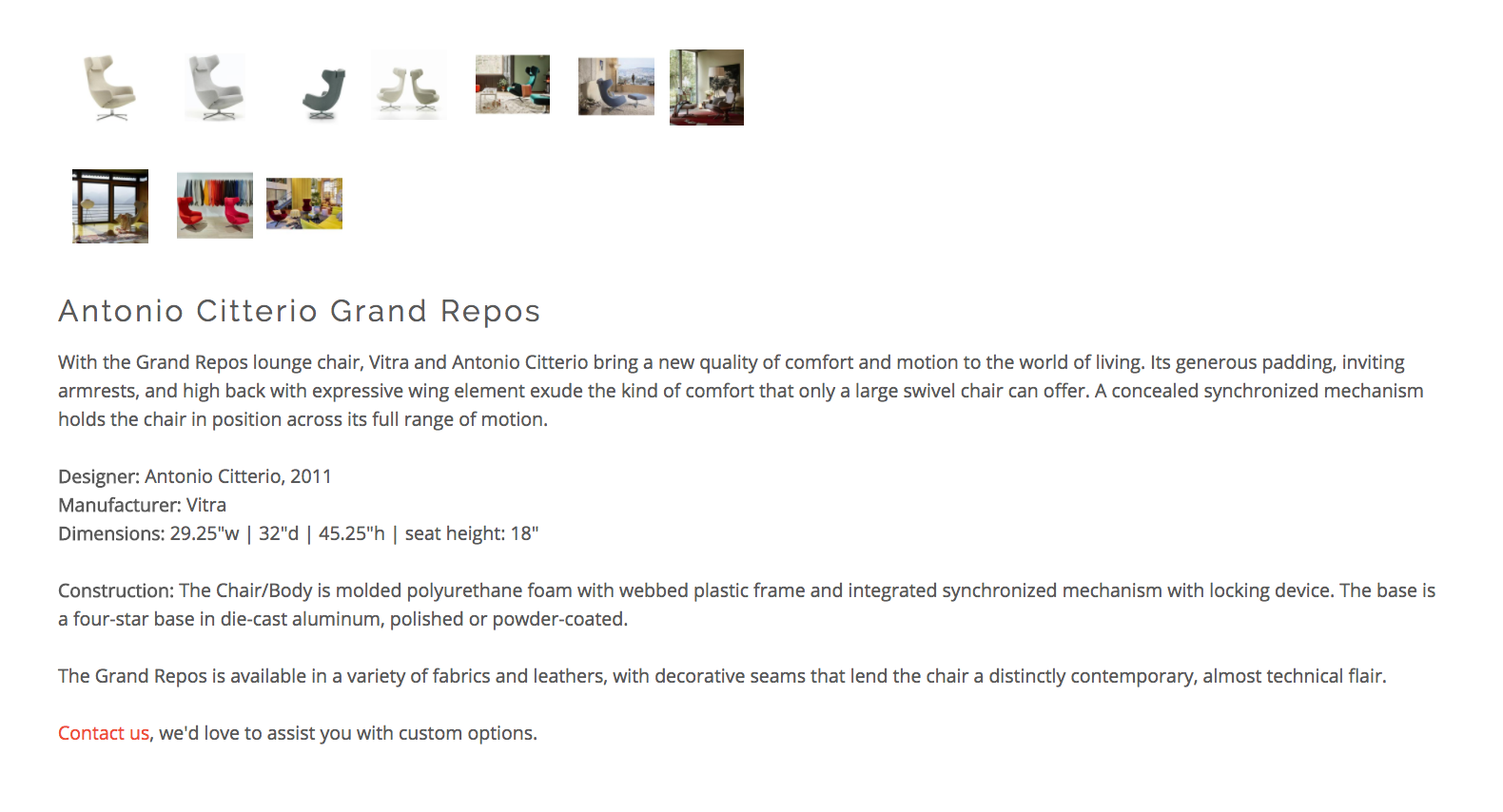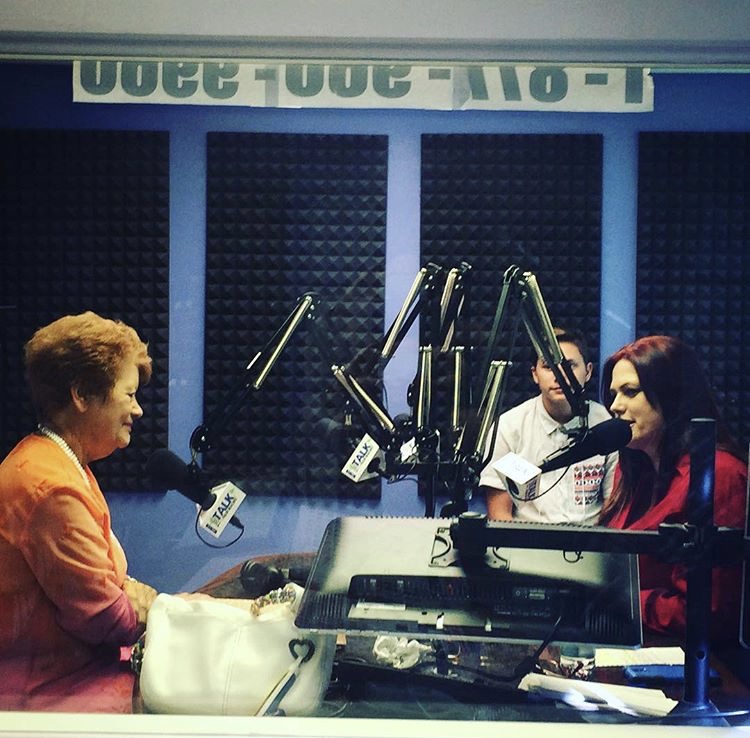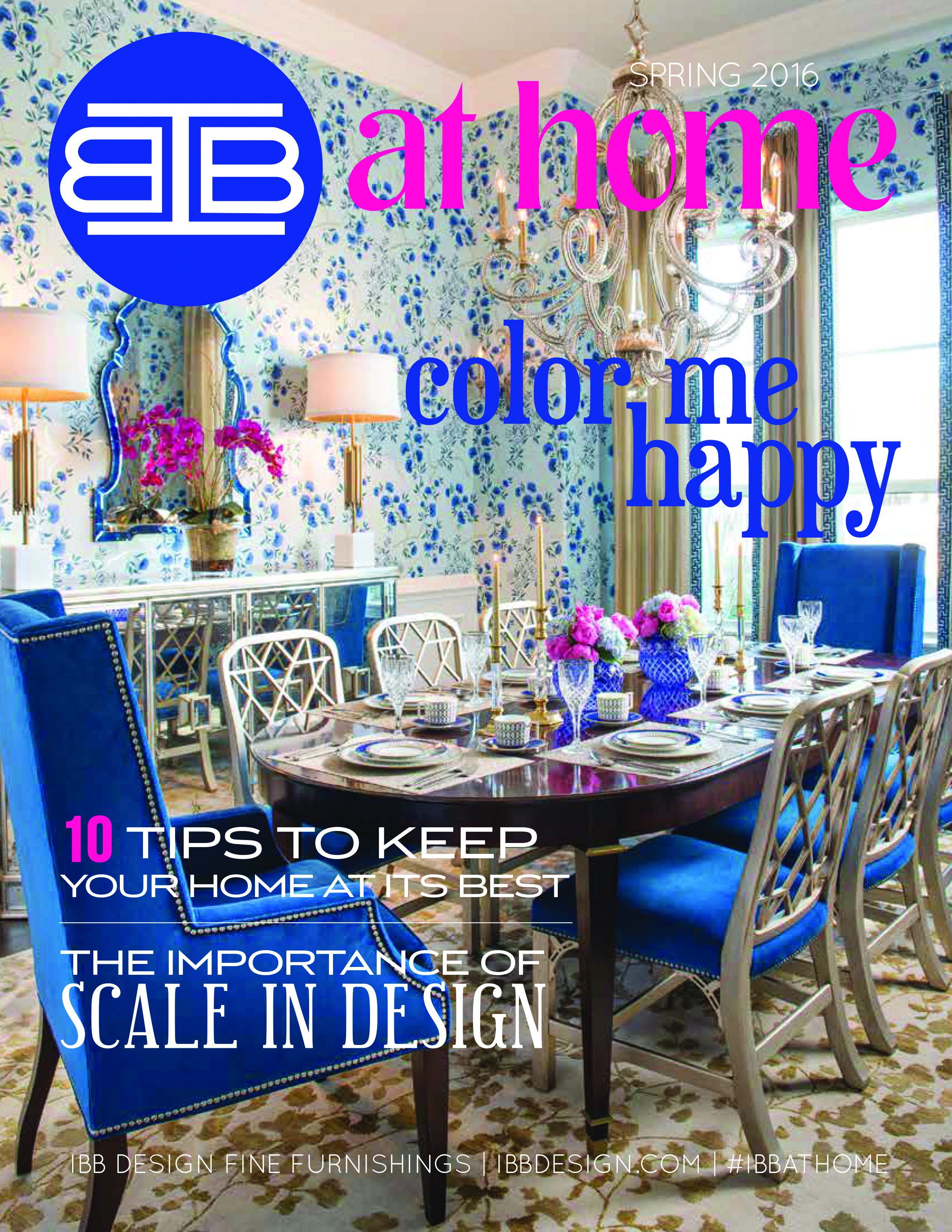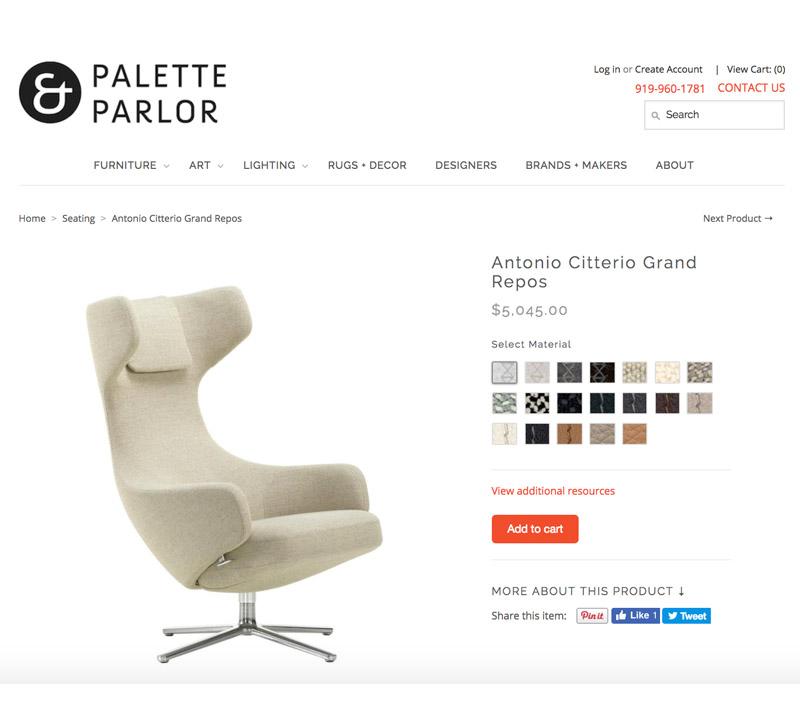It’s near midnight and John and Ivy Simon are still hard at work. While their Chapel Hill, NC, store closes at 6 p.m., most evenings the husband-and-wife team can be found bent over their laptops, diligently fine-tuning the content of their website, www.paletteandparlor.com.
“Neither my husband nor I have any technical expertise, and neither of us can code, but there are great tools out there now like our e-commerce platform Shopify,” Ivy relates. “It’s very user-friendly, so we stay up every night, adding pictures and product descriptions, using content from our manufacturers to build and build. Along the way we learn things like how to optimize every single image alt tag and the keywords that shoppers are using when they are looking for the type of furniture we sell. We learn as we go, which I think is just part of being an entrepreneur. And I read recently that the number-one factor that distinguishes successful entrepreneurs is simply the willingness to persevere past the hard times, the ups and downs, and the U-turns you have to take.”
This Is Us
As purveyors of iconic Mid-Century Modern furniture brands (Knoll, Vitra, Fritz Hansen, Carl Hansen & Son and Kartell among them), the Simons are a prime example of a new breed of young retailers who are rewriting the book on furniture retail marketing. Armed with MBAs, they decided to put Ivy’s love of Danish design — acquired while working overseas in global marketing for a Danish pharmaceutical company — and John’s expertise in operations to work. In true omnichannel fashion, they sell modern furniture in their brick-and-mortar store as well as online through their website and social media accounts. Initially, they found selling furniture to shoppers in their local market fulfilling, yet “more of a challenge than we thought it would be.” They were pleasantly surprised by the results they saw online, which now accounts for 40 to 50 percent of overall sales.

In an industry littered with websites characterized by postage-stamp size photos and product descriptions that consist of little more information than dimensions and finish, the Palette & Parlor site is something of a revelation. Ivy is passionate about sharing the stories behind each piece of furniture the couple sells, along with bios of the designers who create them, and her effective storytelling is proving to be a winning strategy. Indeed, architects and interior designers from across the country have been attracted to Palette & Parlor via the information-laden website, and the couple has been doubling their numbers each year since opening the store in June of 2015.
This becomes all the more interesting considering that the Simons are often competing directly with the very manufacturers whose products they sell. Knoll, for example, manufactures and supplies the store with furniture, and it also operates its own showroom and website, which Ivy reports is growing every day. “It’s an interesting dynamic to navigate,” she says, “because they are also selling direct to consumers.”
Words to Make a Living By
For independent furniture retailers like the Simons, both the landscape and the industry’s language is changing fast, with new words like Amazon and phrases like artificial intelligence (AI) rapidly entering the lexicon and quickly dominating the dialogue. With change always a constant, one thing is certain now: Consumers are more connected and have more choices and control over their media experiences than ever before, and that makes the ability to reach them with consistent messaging a major challenge for marketers.
While Palette & Parlor’s social-selling techniques define the leading edge, there are also those who are breaking through the noise with old-school tools that reflect their core principles and enable them to define their companies and their personalities in ways that stand out in their marketplaces and the public mindset.
Retailer Cynthia Heathcoe of Contemporary Living in Palm Beach Gardens, FL, recognized with the coveted Emerging Star Award by her peers at the Home Furnishings Association Conference in San Antonio this past June, is leading the charge. The award, bestowed by her peers at a gala celebration, is a stunning acknowledgement of her ingenuity, hard work and just how much Heathcoe has achieved since making the brave decision to flee an abusive relationship for the relative safety of a homeless shelter 18 years ago. At the time, she was a single mother of six, with a newborn in hand.
“I didn’t want to stay on government assistance so I decided to go back to school and get my business degree,” she remembers. “My plan was to become a social worker and help other women going through trauma in their life, but I applied for a summer job at a furniture store between semesters and fell in love with it. I loved engaging with the customers, problem-solving and helping them choose pieces for their home.”
We humans are suckers for happy endings, and Heathcoe regularly shares hers with other South Florida businesspeople via charity events, leadership groups and the Jim Moran Institute for Global Entrepreneurship. Yet she connects best with her customers via her own weekly talk radio show on 900 AM, The Talk of the Palm Beaches. The radio show is regularly re-packaged as a podcast.

“I had visited the radio station as a guest on a show called ‘SCORING Your Business,’ with my SCORE mentor, who had asked me to come on to talk about my business,” Heathcoe says. “A week later, the sales staff from the show came out to visit and pitched the idea of doing my own show, where I could share my passion for design and doing it has been one of the best decisions I’ve made. This is a second-home market and the listening audience is an older, wealthier demographic. Sometimes I bring in non-profits and talk about their charities and causes, and other days I have no idea what I’m going to talk about and one of the women from the station and I just get on and talk. I really don’t write a script; I just talk from the heart. It’s real and it’s authentic.”
Listeners respond to her genuine approach. “There’s no question that the show has helped build my brand and gives me more credibility with clients who see me as an authority on the subject of home,” Heathcoe describes. “I’ve had people who have heard the show come in and hand me the blueprints of their home within 30 minutes of meeting me. Others walk into the store and say, ‘I’ve heard your show and I think you’re awesome, and I just wanted to tell you that.’ Then they leave. They are not in the market to buy at that moment, but that’s OK, because they eventually will be.”
Star-Powered
Dallas-based Shay Geyer, owner of IBB Design Fine Furnishings, inherently understands that moving people and motivating them to buy today requires a shift in strategy and focus. The designer started IBB the blog in 2008, and is well known throughout the home furnishings industry and on a social media as a blogger and High Point Market Style Spotter, and in the Dallas television market, as a weekly contributor on design on “Good Morning Texas.” Her burgeoning collections of licensed home furnishings collections debut this fall. From a marketing standpoint, however, the quarterly, self-published, 60-page lifestyle magazine she launched in 2013 is the engine driving her family’s single-store, high-end retail business.
IBB Design Fine Furnishings employs 36 interior designers who develop and write content for the glossy publication with a circulation of more than 15,000, distributed through free subscriptions and mailing lists, on site at the store, via the website and in the swag bags of various charity events that align with their targeted demographic of affluent homeowners ($1.1M and above). Four years into the project, Geyer says, “There are people who have saved all 12 issues to date. We know, because when we announce on social media that a new issue is out, people will take pictures of past issues and post them on Facebook. They are holding onto the magazines for inspiration and they are coming in pointing to articles and saying, ‘I want to see some art,’ or ‘I want this lamp,’ or they are reaching out to a specific designer if they liked a particular article. In one case, a designer who wrote about an outdoor living area was contacted to do a similar concept and it turned into a whole house project.”

Not surprisingly, staff turnover is minimal. “I may be the face of the company because this is a family business, but we think it’s really important to showcase all of our designers and the work that they do in the magazine and at special events,” the executive says, acknowledging that recognition continually outscores compensation in any study of why employees remain loyal to an organization. “It’s really been a great tool for our designers. We get a lot of exposure from my design segment on ‘Good Morning Texas,’ but in terms of marketing investments, the magazine is our number-one return-on-investment by far.”
Storytelling, no matter which way you do it, makes a difference in your brand ID, your marketing and your bottom line. By diving deeper and not only telling potential customers, but showing them, how your business is unique, you’ll stand out in furniture retailing.







